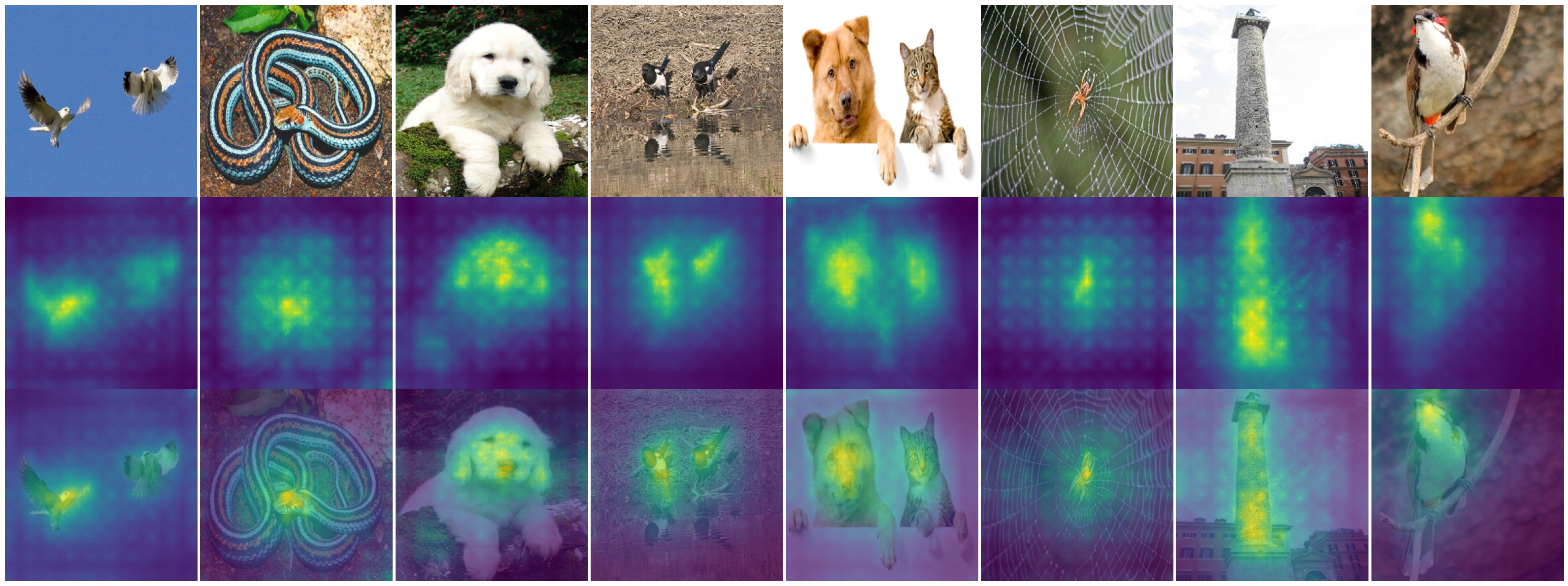Full Gradients¶
In this page, we describe how to obtain saliency maps from a trained Convolutional Neural Network (CNN) with respect to an input signal (an image, in this case) using the Full Gradients AI explaining method. Said maps can be used to explain the model’s predictions, determining regions which most contributed to its effective output.
FullGrad (short for Full Gradients) extends Gradient Back-propagation by adding the individual biases contributions to the gradient signal, forming the “full” explaining maps. This technique is fully described in the paper “Full-gradient representation for neural network visualization”, published in Advances in neural information processing systems, 32 by Srinivas, S., & Fleuret, F. (2019), arxiv.org/1905.00780v4.
Briefly, this can be achieved with the following template snippet:
import keras_explainable as ke
model = build_model(...)
model.layers[-1].activation = 'linear' # Usually softmax or sigmoid.
logits = ke.inspection.get_logits_layer(model)
inters, biases = ke.inspection.layers_with_biases(model, exclude=[logits])
model = ke.inspection.expose(model, inters, logits)
x, y = (
np.random.rand(32, 512, 512, 3),
np.random.randint(10, size=[32, 1])
)
logits, maps = ke.full_gradients(
model,
x,
y,
biases=biases,
)
We describe bellow these lines in detail.
Firstly, we employ the Xception network pre-trained over the
ImageNet dataset:
model = tf.keras.applications.Xception(
classifier_activation=None,
weights="imagenet",
)
print(f'Xception pretrained over ImageNet was loaded.')
print(f"Spatial map sizes: {model.get_layer('avg_pool').input.shape}")
Xception pretrained over ImageNet was loaded.
Spatial map sizes: (None, 10, 10, 2048)
We can feed-forward the samples once and get the predicted classes for each sample. Besides making sure the model is outputting the expected classes, this step is required in order to determine the most activating units in the logits layer, which improves performance of the explaining methods.
from tensorflow.keras.applications.imagenet_utils import preprocess_input
inputs = preprocess_input(images.astype("float").copy(), mode="tf")
logits = model.predict(inputs, verbose=0)
indices = np.argsort(logits, axis=-1)[:, ::-1]
explaining_units = indices[:, :1] # First-most likely classes.
The FullGrad algorithm, implemented through the
keras_explainable.methods.gradient.full_gradients(),
expects a model that exposes all layers containing biases (besides the output).
Thus, we must first expose them. The most efficient way to do so is
by collecting the layers directly:
logits = ke.inspection.get_logits_layer(model)
inters, biases = ke.inspection.layers_with_biases(model, exclude=[logits])
model = ke.inspection.expose(model, inters, logits)
Now we can obtain FullGrad by simply calling to the explain() function:
_, maps = ke.full_gradients(
model,
inputs,
explaining_units,
biases=biases,
)
ke.utils.visualize(
images=[*images, *maps, *images],
overlays=[None] * (2 * len(images)) + [*maps],
)

Note
Passing the list of biases as a parameter to the
full_gradients() function is not required, but it
is generally a good idea, as it avoids unnecessary recollection of those.